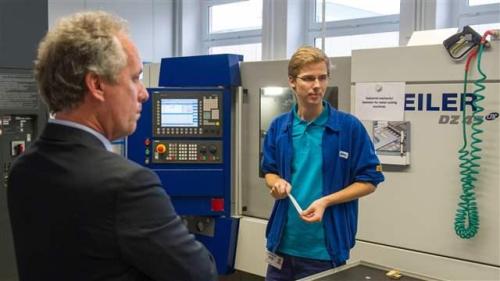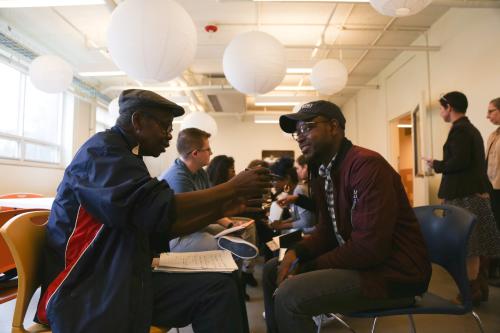This article was originally published by the Washington Post.
Education and skills are the currency for workplace success in our advanced economy, but many young Americans struggle to launch their careers. Unemployment rates among teens and young adults are typically much higher than they are for workers over age 25, and more than 3 million U.S. youths — nearly 8 percent of all young people — are disconnected from both work and school.
This represents an unfortunate case of American exceptionalism. We should look to places such as Germany to inspire new ways to align government, business and educational institutions to prepare young people for economic success.
In the United States, educators and employers generally operate in separate spheres. We spend less on active labor-market support — policies that provide direct support like training and job-search assistance — as a share of our economy than all but two countries in the Organization for Economic Cooperation and Development. As a consequence, young people largely navigate the labor market unassisted. The OECD reports that the share of U.S. youths who are not employed, in school or in training programs is about five percentage points higher than in other advanced economies such as Germany and Japan.
Both workers and the economy suffer due to this lack of structure to help young people enter the workforce. A recent report by an association of human resource officers called the school-to-work transition a “long, painful process,” noting, “(many) employers are reluctant to hire recent college graduates because so many fail at their first, second, and even third jobs.” Employers struggle to fill 5.5 million jobs nationwide, hindering overall economic growth.
By contrast, countries like Germany pursue a “dual educational” model that blends classroom education with on-the-job training through apprenticeships, equipping young people not bound for university with practical labor-market skills. From the beginning of the journey from school to work, dual-system participants establish close relationships with employers. Companies sign contracts with young people (typically around age 15 or 16) and provide them an hourly wage just below that of an entry-level worker. On-the-job training typically comprises two-thirds of the curriculum in the dual system.
Collaboration is key to the success of this system. Regional chambers of commerce in Germany work with employers and government to classify about 350 occupations nationwide, design and administer certification exams for apprentices, and monitor how businesses train and treat their workers. About 60 percent of Germans receive a relevant occupational certification by the age of 20, either through the dual system or a full-time vocational school. And apprenticeship experiences can be used as credit if young people want to continue their studies at university.
It would be naive for U.S. leaders to try to adopt the German model whole cloth. Our educational system is driven by maximum student choice, and “tracking” students at a young age has a troubling racial history in this country that we are right to avoid. But there are several lessons from Germany that can help ease the transition for young people into stable and successful employment.
For starters, we must build stronger bridges between employers and educators. A number of initiatives integrate high-quality academics and skills training with work-based learning experiences through internships and co-ops. These include job-training programs such as Year Up and high school reforms such as Career Academies and Linked Learning.
At the postsecondary level, Drexel and Northeastern universities have long-standing commitments to co-operative education that combine classroom learning with on-the-job experience. In Kentucky and Michigan, employers created consortia-based regional apprenticeship models. All of these efforts seek to overcome the common challenges that prevent educators and employers from working collaboratively.
At the same time, we should match our commitment to make education accessible with a commitment to help students complete their studies and earn meaningful credentials and degrees. We should fund institutions based on graduation as well as enrollment (with adjustments for schools serving less academically prepared students) and provide incentives to improve labor-market outcomes. To that end, reforms should address the fact that many of the most industry-relevant community and technical college programs are ineligible for transferable credits, Pell grants and free tuition because they do not meet the minimum class-hour requirement. Schools can also adopt industry-recognized credentials and certifications into their curricula to remain current with labor-market needs and signal to employers that their students are work-ready.
The U.S. education and training system should endow students with the skills to succeed in an increasingly demanding workplace and, at the same time, equip them with critical thinking skills to prepare them for adult life.











Commentary
Op-edHere’s what American universities can learn from Germany
July 27, 2016